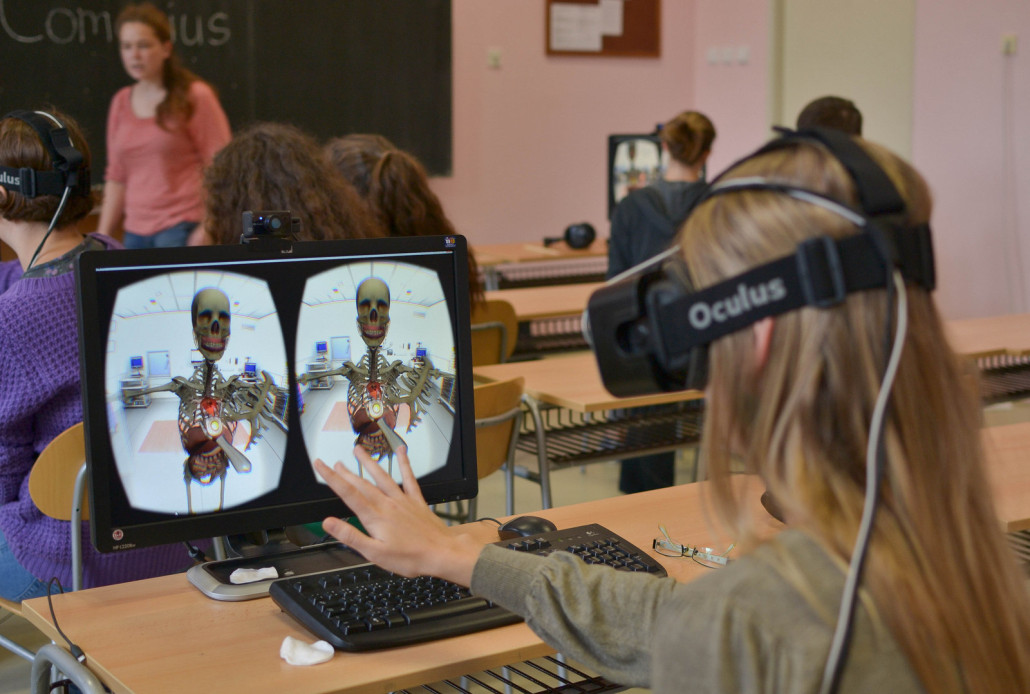Education and VR: 5 examples of bending reality to enhance learning
It’s becoming more difficult to engage young minds in the classroom. Contrary to popular belief, this isn’t down to low attention spans or under funding by the government. In fact, it’s more to do with how constant exposure to technology at a young age has caused skills, interests and learning to develop outside of traditional methods.
With VR predicted to hit the mainstream within the next 5 years, it’s looking highly likely that we’ll see the introduction of VR learning experiences and tools into many classrooms.
Below, we explore a few ways in which VR can enrich education and what the future might hold.

Virtual Reality is beginning to be applied in education to help inspire young minds
1. Taking field trips without ever leaving the classroom
There are a myriad of issues surrounding school field trips: funding, parental consent and logistics, to name but a few. Students now have the ability to travel to exotic landscapes, museum exhibitions and historic landmarks using software like Google Earth VR and Google Expeditions, all without ever leaving the classroom.
We recently worked with the Van Gogh Museum in Amsterdam to create a virtual exhibition of the artist’s 5 ‘Sunflowers’ paintings, which are housed in museums all over the world. This is the 1st time all of these paintings can be seen in the same place. Read the case study here.
2. Breaking down global barriers
VR social spaces, like AltspaceVR or Facebook Spaces, create an environment which has the capacity to expand children’s social experiences. The potential to live stream field trips and educational seminars with other students around the world will inevitably break down global barriers and make the study of foreign languages far easier, too.

VR social spaces like 'Facebook Spaces' help to expand children’s social experiences
3. A new dimension of creativity
Software like Oculus VR’s Tilt Brush and Gravity Sketch give students an entirely new art canvas to work with—one which is 360° degrees. Virtual reality apps and software can also be used to teach and practice other creative pastimes, like product design and coding. When you consider how widely this innovative medium has been adopted, who’s to say whether or not they will become necessary skills for the future?

4. Show and tell
Explaining complex concepts and ideas to young minds has previously been limited to the confines of the white board. Immersive experiences, 360° modelling and demonstrations provide a new and exciting environment in which to explore new ideas. This can be used to illicit an emotional response to certain scenarios and to engage their minds with a more experiential teaching method.

5. Experiencing the impossible
History and science might seem complex on paper, but virtual reality experiences have the potential to bring them to life in incredible detail. The TimeLooper app lets VR users experience historic moments in time and The British Museum have even held exhibits to showcase the wonders of the Bronze Age. Why limit lessons to planet Earth? There are programmes which can take a child to the surface of Mars or the international space station!

If you’d like to discuss the possibilities that virtual reality experiences and films can provide for your business or organisation, get in touch with Visualise today.

Comments
Responses